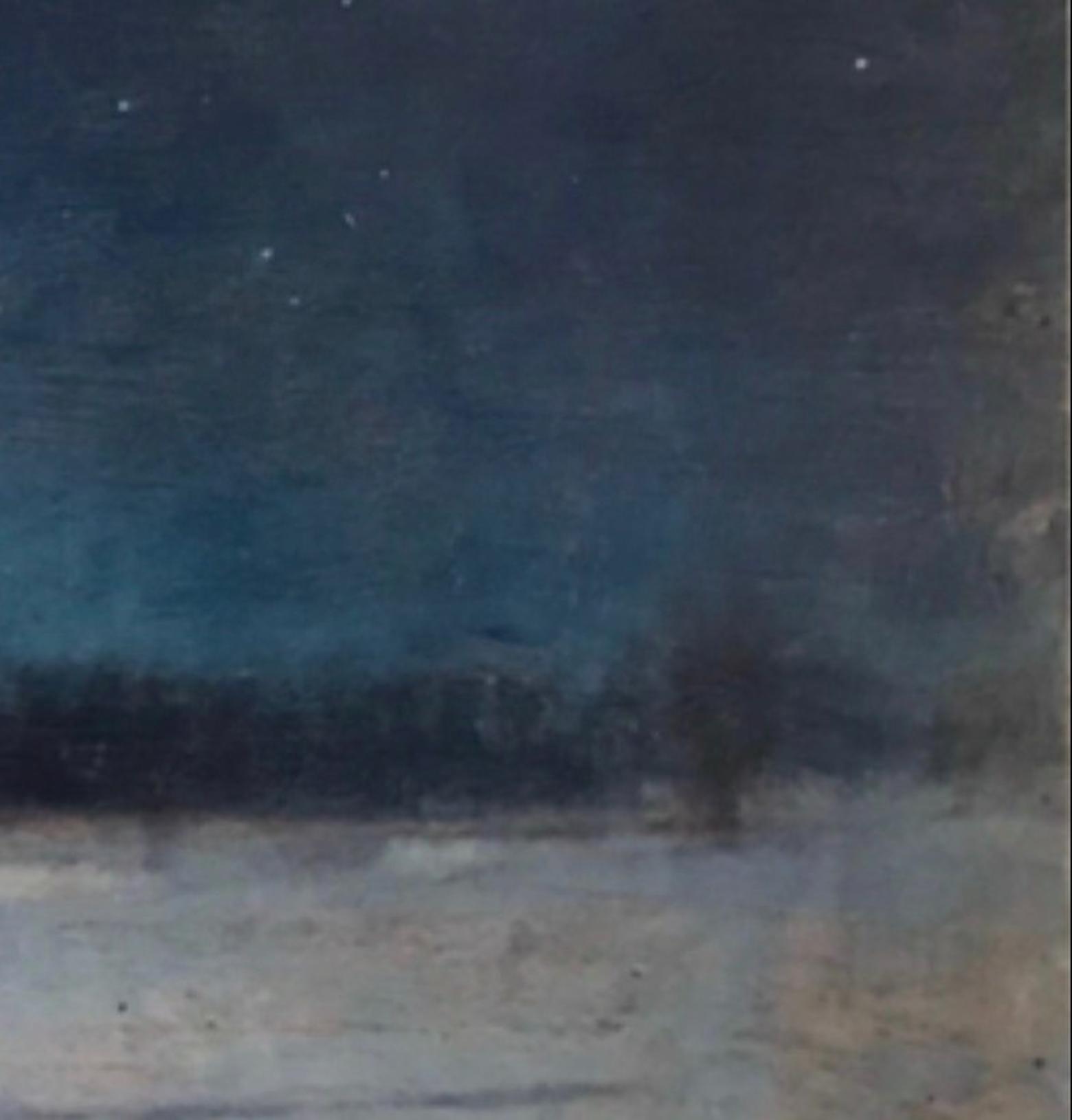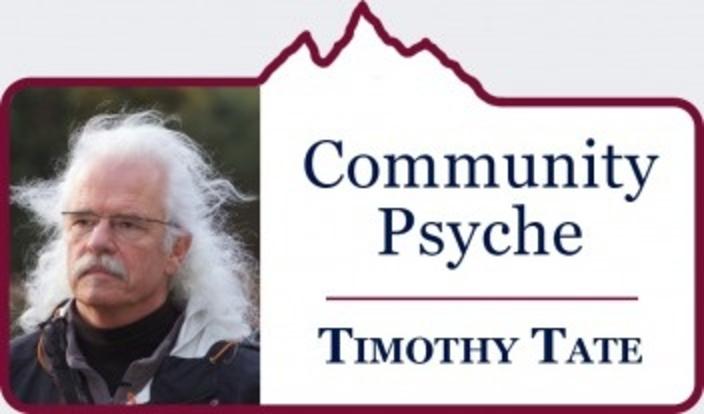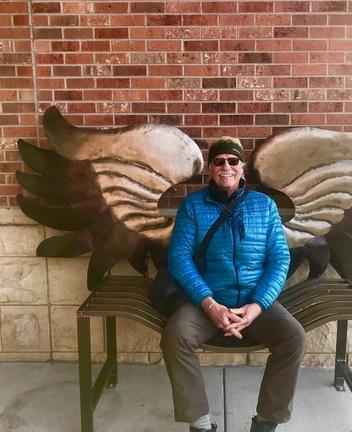Back to StoriesAfter A Surreal Year Like This, How Do We Center Ourselves Again?
As a septuagenarian who tries to help people deal with modern existence, the years for me have seemed to pass like episodes in a Greek drama acted out on the stage of our singular lives. We celebrate the departure and arrival of years both collectively and with birthday parties for another one notched on the staff of our earthly story.
November 26, 2020
After A Surreal Year Like This, How Do We Center Ourselves Again?For many, Timothy Tate says, gaining '2020 vision' has been traumatic. Let this holiday stretch bring reflection. The best gift you can give: listening
By Timothy Tate
As a septuagenarian who tries to help people deal with modern existence, the years for me have seemed to pass like episodes in a Greek drama acted out on the stage of our singular lives. We celebrate the departure and arrival of years both collectively and with birthday parties for another one notched on the staff of our earthly story.
I am among those who will not be sadder to say goodbye to 2020—the year that was supposed to spin around the theme of "2020 vision."
A quarter of a million people are absent from the Thanksgiving table this year due to Covid. There’s no bringing them back. They are the mortal casualties of this annus horribilis but it's taken a toll on all of us. The year, of course, wasn't all bad. My daughter got married, I spent more time outdoors and our country looks like it will survive.
But there's some serious healing that needs to happen.
Since we’re in the American West, allow me to
use a regionally-appropriate metaphor.
2020’s downcast infamy is scorched into our collective
psyche like a brand on the hide. Like any branding there is an
arc in the procedure leading to the red hot iron’s smoking stab and the
permanent mark it leaves. How has the arc of 2020 branded our individual and
community psyche? Will our mountain towns return "to what they were" or are we now in a permanently different place?
The purpose of branding is to make vivid who
owns livestock. The mark can signify the personality of the people who use it, a
ranch’s habitat, or a fanciful interpretation of a home on the range. If we
were to sear a brand on the wild year of 2020, what would it be? Might it be a
symbol of confusion and trauma, a sigh of relief, middle finger salute, or
maybe a rose with thorns?
Most of us are tired, many feeling as if in this disrupted year we've aged disproportionately or lost time. While each of us is imprinted by the effects
of singular events, together we continue to move through a span of time that
has been unlike any other and I imagine younger generations will be dealing
with residual effects for decades to come.
As a psychotherapist witnessing the toll that
the pandemic’s impact on our mental health has taken, the brand I’d choose to
represent what I’ve seen in patients would be a combination of anxiety, dread,
loss, depression, and reactivity. It would look like a surreal symbol whose
handiwork bore the influences of Hieronymous Bosch, Salvador Dali, Stephen King
and Frida Kahlo for her painting representing death by a thousand cuts.
Our modern psyches are geared toward facing
unexpected challenges but it fares poorly when the crisis is not situational
but chronic. In other columns for Mountain Journal, I have explored how
our mind/body vessel is battered when the normal stress of responding to a
crisis slips into a distressed state—stressed about stress—and then plunges
into a dysregulated state.
There, a toll can be taken on the body and the
mind no longer is capable of regulating its emotional states. Think thoughts in
the mind that cause us to withdraw, not exercise, eat too much or too little,
and internalize stress instead of releasing it.
This somatizing of distress can be converting
into emotional trauma that can be evoked by all manner of stimuli: news
broadcasts, newspaper articles, inflammatory rhetoric, hearing of local spikes
in Covid-19 numbers, family visits featuring divergent views on the seriousness
of the pandemic or politics, and most critically our own internal mental
fatigue of dealing with real fake news devoid of facts.
Our brain is built with a self-preservation
function that assesses and prioritizes signals of perceived threats. Once we
subconsciously establish our method of managing our approach to danger, say by wearing
masks, social distancing, and refrainining from large gatherings, our brain
believes we have taken care of the problem.
That’s like saying I know what a bear looks
like, sounds like, and behaves and I have bear spray to protect myself and will
be composed enough to pull it out of its holster in time to spray it accurately
if a bruin should charge.
The challenges to our mental health in these
days are many. We tend to ignore the hundreds of subtle reactions our bodies
are registering, not recognizing their impact or how we’ve tried to subdue them
until a car cuts us off in traffic and we erupt with exaggerating offense.
In a recent interview, Bruce Springsteen spoke
about the “talking cure” being valuable for him. Having someone to whom you can
release anxiety through communication is the heart of psychotherapy.
To be heard without judgement is like coming
upon a hidden freshwater spring when parched. There are elements in compassionate
listening that are transferable beyond the consulting room. As obvious as it
might seem, the ability to relax the compulsion to express our personal agenda or
defending our ideas in favor of listening to the other’s words/feelings is the
core skill of the talking cure. And you don’t need a therapist to be there for
someone else or identify a person who will really listen to you.
Another key element is creating an environment
that is not hurried or harried. If you are familiar with British television
dramas there is a move to the tea kettle in times of a distressed visitor
seeking comfort. Assuring the other that you have heard what they have revealed
by summarizing what has been spoken confirms compassion. Be wary of giving
advice too quickly. Answers, as smart as you think you are, are overrated. The
sensation of being seen and heard is often enough medicine.
Let’s return to the branding analogy. One of
its primary uses in our interior West is to identify lost or stolen livestock.
There are a thousand ways to get lost in the terrain of states like Montana
where hidden gullies or unexpected rain turns the path into impassable slick
clay gumbo. We’ve all been seared by Covid, some deeper than others, and it’s
important that all of us try to be aware of those who feel lost and need help
finding their way home again.
EDITOR'S NOTE: About the painting at top titled Strange Procession by John Felsing. The artist writes:
"Looking at the stars has been a lifelong passion. For in the mystery of the heavens I have discovered so many answers to so many dreams. Of course, the questions remain infinite as I get lost in the depths of the night. Over time I learned that being lost was exactly where I wished to be with my work, for only when lost do I feel I am getting anywhere. You see few stars near the horizon, even on the darkest nights. The few present here were like angels hanging onto the wind. I’m not certain why this atmosphere pulled so hard at my heart, I only know that it did. Perhaps it was my response to walking ‘round midnight, yet again, my home away from home. Another dark painting, rife with cobalt and melancholy - there is no place I would rather be. Allow me to share this poem below that seems to convey what nature offers us as a place to escape.
"There is a pleasure in the pathless woods:
There is a rapture on the lonely shore:
There is society, where none intrudes,
By the deep sea, and music in its roar:
I love not the man less, but nature more...."
- Lord Byron




